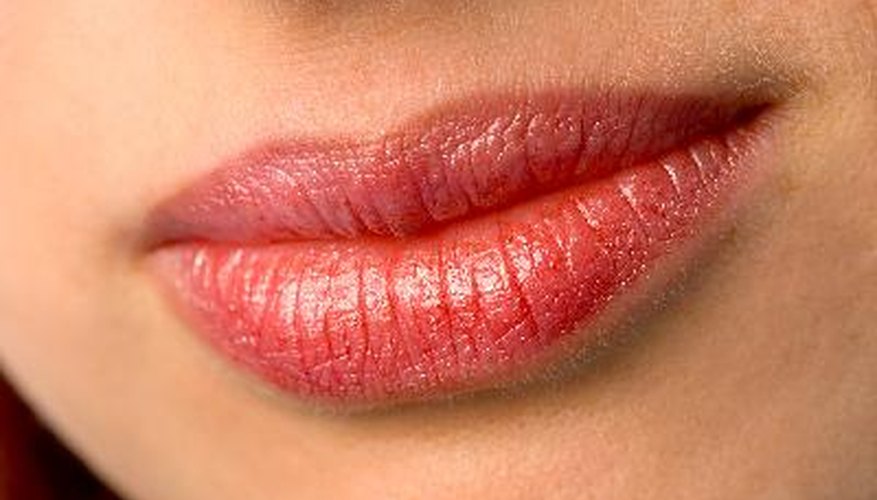Cheilitis is a general term for inflammation, dry scaling and fissuring of the surface of the lip. Angular cheilitis is cheilitis that occurs in the corners of the mouth, or labial commissure. In severe cases, the deep cracks or splits can cause bleeding and the formation of ulcers or a crust. Treatment with dish soap and vaseline can relieve the symptoms of angular cheilitis for some people.
Causes
Causes of angular cheilitis can include the following: the fungus Candida albicans (thrush); vitamin deficiencies (particularly zinc, vitamin B2 and iron); malnutrition; braces; ill-fitting dentures; medications that dry the skin; and bacterial infection. Severe chapped lips, as caused by dry, cold conditions, are a form of mild cheilitis. Angular cheilitis is more common in the elderly, in people with compromised immune systems and in people with poor oral hygiene.
Types of Treatment
Treatments for angular cheilitis vary depending on the cause of the condition. Topical creams work best for angular cheilitis caused by a bacterial infection, while topical over-the-counter antifungal creams are effective for mild fungal infections. Prescription-strength topical creams or antifungal pills are often necessary in more severe cases. Sufferers of fungal angular cheilitis can treat themselves at home, using dish soap and vaseline.
- Treatments for angular cheilitis vary depending on the cause of the condition.
- Topical creams work best for angular cheilitis caused by a bacterial infection, while topical over-the-counter antifungal creams are effective for mild fungal infections.
Home Remedy
According to the Journal of Family Practice, dish soap and vaseline can be an effective treatment for fungal angular cheilitis. It works by depriving the fungus of the moisture that is critical to its survival. The organisation recommends the following: Wash your hands with antibacterial soap and hot water, then clean the affected areas thoroughly with dish soap and warm water, and allow them to dry completely (this usually takes about 10 to 15 minutes). Once the sores are dry, apply a generous amount of vaseline. After about two hours, repeat the procedure. This treatment is best done in the evening, before bed. You should notice some improvement by morning, but it can take up to three days of the treatment for symptoms to resolve.
- According to the Journal of Family Practice, dish soap and vaseline can be an effective treatment for fungal angular cheilitis.
- The organisation recommends the following: Wash your hands with antibacterial soap and hot water, then clean the affected areas thoroughly with dish soap and warm water, and allow them to dry completely (this usually takes about 10 to 15 minutes).
Prevention/Solution
Faculty at Harvard University Medical School recommend using a hypoallergenic lip balm to prevent chapping and avoiding licking your lips. They also suggest making sure dentures are fitted properly to prevent a build-up of saliva in the corners of the mouth and avoiding excessive touching of the mouth.
Warning
If your symptoms worsen or do not improve after three days of treatment with dish soap and vaseline, it's a good idea to consult a doctor. Your angular cheilitis could be the result of a bacterial infection, a vitamin deficiency or a fungal infection too severe to be cured by this treatment.
